Former Collegiate Runners Are Betting On Themselves To Get Back To The NCAA
Former Collegiate Runners Are Betting On Themselves To Get Back To The NCAA
A small middle-distance group out of Austin, Texas is taking athletes out of the NCAA and trying to develop them back into the system.

AUSTIN -- Zach Kehler was hanging on by a thread.
At least, that's what it felt like on this cool Friday morning in February as he was tracking a group of runners single-file down the backstretch of the Austin High School track on the end of a 300 meter set, which was on the end of four hard intervals of broken 800s, a workout that had firmly taken him to the edge.
By the finish, Kehler's hair was frizzed skyward as if he had jumped out of a plane. But this is what he had signed up for, being part of a middle-distance program that would whip him into shape after he was cut by Texas State.
That moment had devastated him for a lot of reasons. He had tried to gut through the cross county season in 2022 while secretly being diagnosed with mononucleosis, because Texas State was the small Division I program he had dreamed of being a part of after finishing his high school career with solid-if-unspectacular times of 1:56.50 for 800 meters and 4:28.44 for 1,600m. The Bobcats had rewarded him by allowing him to walk-on.
But he hadn't been good enough, or at least impressive enough, to assure the coaches he was supposed to be a part of that team. They had to let him go.
"I went through a pretty harsh time for awhile," Kehler said recently. "I almost kind of gave up. I didn't think I was going to do this anymore (running). But I hit a point where I was talking with one of my friends from high school and he said, 'You have to go see Paul, man. It'll be the best decision of your life.' I had nothing to lose at the time."
By February, a little over a year later, things had changed dramatically. Kehler, 20, was fresh off his first race of the indoor season, a 800 meter performance of 1:53.12 inside Texas A&M's brand new indoor facility -- a moment that saw him run faster than all four of Texas State's half-milers that day.
"Yeah, dude," he said. "Three second PR. It was amazing."
Kehler unlaced his spikes as he traced back the timeline of his introduction to Paul Carrozza, the head coach of the Borderline Track Club, a training group in Central Texas devised by the 61-year-old to become the D League of collegiate running.
Carrozza's long-term goal is to make Borderline a three-prong powerhouse, one that can elevate athletes to the U.S. Olympic Trials and make Olympic teams. His son, Crayton Carrozza, 24, an NCAA champion for Texas who finished his career with six All-American finishes, is the group's biggest hope, though Paul has also previously trained Tennessee's Yaseen Abdalla -- the SEC runner-up in the 3K over the weekend -- and currently oversees Chandon Chhikara, a Texas A&M graduate with hopes of running 3:37 for 1,500m and 13:25 for 5K. Carrozza is a long-time coaching figure in the city.
One step below are dreamers like Kehler, who aspires to jump-start his career and find his way back to the NCAA. Carrozza's current roster includes Jackson Szczerba, a former Division II runner for Concordia University Irvine; Gabriel Lopez, an Oklahoma native who is taking a gap year from Division II St. Edward's University; Edwin Gomez, a former University of Texas runner from El Paso; Ryan Bonemar, a late-bloomer hoping to make his first collegiate team; and Liam Donohue, who's looking for another home after spending time at Texas A&M.
And then there's a third step, which might be the most important of all. It includes building out a youth track program that can fund Borderline to become a self-sustaining business, giving its top members resources to race when and where they need to. Carrozza also runs the Born to Run Track Club, which is the high-performing high school section of the group that includes both boys and girls from around the Central Texas region.
"We're not trying to make them rich," Carrozza said of his post-high school and post-collegiate athletes, "we just want them to make it happen."
And so the Borderline Track Club can best be described as NCAA adjacent, as Carrozza holds strong relationships with coaches at Texas State, Texas A&M, Texas, Texas Tech and Arkansas. Athletes with the club still have to pay for the training and need to show up every day for the workouts. But the ambition has netted success stories before.




Chhikara, for example, signed with Texas A&M in 2022 after a four-year gap period between his freshman season at Pepperdine. After his stint in California, he came back to Austin and enrolled at Texas, later graduating, but at no point did he ever run for the Longhorns, despite putting up high-level training with Borderline from 2020 through 2022.
When the Aggies came calling for his post-grad year, he jumped at the chance. He ran 3:43 for the 1,500m at the SEC Outdoor Championships in May of last year. He says it was Carrozza's training -- and more importantly, his belief -- that allowed him back on that stage.
"I've said it a 1,000 times before and I'll say it 1,000 times again," Chhikara, 24, said. "Paul Carrozza, Born to Run, Borderline Track Club ... saved my running career. I would not be the runner or the man I am today without them."
So, there's a reason why the club exists. NCAA Division I coaches still need to produce results and for teams who aren't insulated with developmental systems for back-roster athletes, the introduction-phase for young athletes and those not performing can be jarring.
"College systems are tough," Carrozza said. "There's no freshman or jayvee system. So if you can't survive and get to that junior or senior breakthrough or be that rare freshman, you just get chewed up."
Borderline is tapping into a familiar theme. Track clubs exist all across the United States, and many take on all forms of athletes who pay for coaching to improve. Many have done the same as Borderline, elevating runners into scholarships and opportunities. But Borderline feels like the club for those on the fringes.
On this Friday, Carrozza is a lean 61, wearing dad jeans and fiber plated Mizuno shoes. He has thick, tussled gray hair, talks a mile a minute, and can be best-described as a mixture of entrepreneur idealist and track coach.
"Doable, repeatable, sustainable," he says, dispensing nuggets of wisdom about his program.
"The ability to repeat and sustain is going to predict what you're going to do in the race, so by having that, by keeping the rest moving versus you standing around and letting your heart rate come down, you're working on the sustainable," he says.
The Friday workout was broken 800s, with a hard 400 meter rep followed by a changing recovery and repeatable stage, one that also adjusted the race pace, from 800m to the mile.
Lopez was fighting to get through the second phase, the moving recovery followed by the sustainable stage. "This is one of the tougher ones," he said.
Like Kehler, Lopez had left St. Edward's within the last six months and was amid a gap-point in his career, now enrolled at Austin Community College. Central Texas happened to be a coincidental landing spot. As a high schooler in Choctaw, Oklahoma, he read an article about Carrozza and had, on a whim, sought his training.
Carrozza received his call and accepted the challenge. Soon enough, Lopez was the fastest prep in Oklahoma.
"He was the one who got me to break two minutes in high school," Lopez said of his 800 meter high school PR of 1:55.18, which finished 2021 as Oklahoma's top time at the distance.
While Lopez's objective at Borderline is to find his next home, he also values the training imparted by Carrozza and the group he's working with.
"These workouts, they are killer," he said. "They are top-tier workouts you'll do in college."
Szczerba was well aware of that notion, too. Holding a mob of hair in his hands, he began to unpack his decision to leave his former home in California. It had been six months out of collegiate running for him, too, and by now he had acclimated to the faster work on the track, compared to the larger volume with Concordia University Irvine.
The Georgetown Eastview graduate had just finished pacing Crayton, a 3:56 miler, through the final 300 meter set at mile pace. Still, minor successes aside, his future was still unknown.
While CUI was located just miles from the Pacific ocean and Newport Beach, Szczerba said he never quite connected with the program, saying he felt like at times it impacted his mental health. His performances in cross country never hit, and training volume was difficult. The last straw may have been an achilles injury, which he picked up in the summer.
"It was really great to be out there in California and experience those first couple weeks of college," he said. "But as I got to know the program more and my coach more, I realized it wasn't really going to be the spot for me."
Szczerba returned to California for his sophomore semester, but it didn't last long. He was back in Austin a week later and then, around noon during a midway day in August, he emailed Carrozza. He had only heard of the 61-year-old through peers who "were either whooping me or a little better," he said.
"I got a pretty quick response," he said. "When we talked on the phone, it sealed the deal for me."
A theme for all of Carrozza's athletes centers around middle-distance dreams. Carrozza himself was a middle-distance runner and his son was a star recruit who went on to have a brilliant NCAA career for the Longhorns, including an NCAA win in the DMR in 2022 and a runner-up finish in the 800m at NCAA Indoors in 2023.
That's what Paul knows and delivers on.
Just six months into his time with Borderline, Kehler ran 1:53.12, Lopez followed in 1:54.77 and Donohue was at 1:55.30. Those times -- while not high-level Division I level yet -- were only the beginning of each athlete's hopes. More races will come in March and April, and then a peak in fitness, in theory, should follow.
More meets are planned for the outdoor season, but more important in the coming months is forming connections with interested programs and sealing fates and future homes. Carrozza says in order for that to happen, his athletes need to be patient.
"We don't chase time, we don't chase people," he said. "We compete."
Carrozza is quick to say that he doesn't want to predict world-level success for his athletes. The process will work itself out, he said. Some will have more success than others, "like supporting characters in a movie," he says.
"I don't want to over promise and under deliver," he says. "It's very simple. We're here to train and when you keep it simple like that, things remain good."
But if Borderline is the midway point for some and a place to improve for others, that's also good enough. Carrozza believes this club can give athletes a second-chance to compete in the NCAA.
"I see it as you're on the borderline of accomplishing whatever it is you want," Kehler said. "That's what it's about."
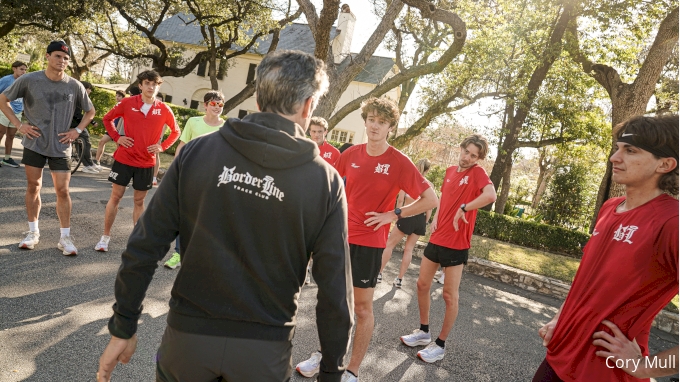
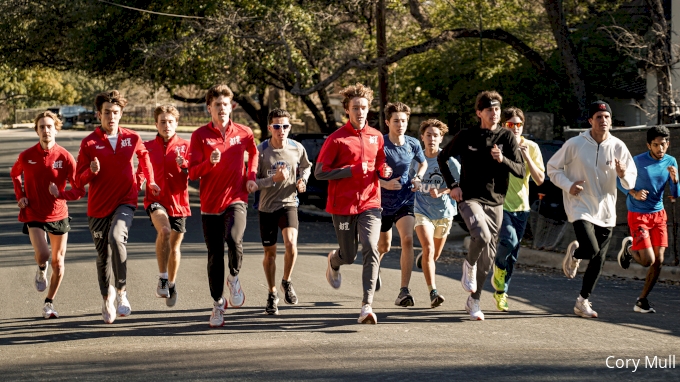

Related Content
 Christian Coleman On Second-Place Finish To Akani Simbine In Men's 100m At Diamond League Suzhou
Christian Coleman On Second-Place Finish To Akani Simbine In Men's 100m At Diamond League SuzhouApr 27, 2024
 Pro Women's 5k Race Walk All Divisions, Event 505, Finals 1
Pro Women's 5k Race Walk All Divisions, Event 505, Finals 1Apr 27, 2024
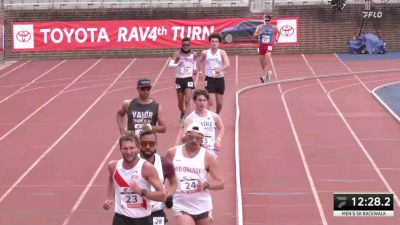 Pro Men's 5k Race Walk All Divisions, Event 502, Finals 1
Pro Men's 5k Race Walk All Divisions, Event 502, Finals 1Apr 27, 2024
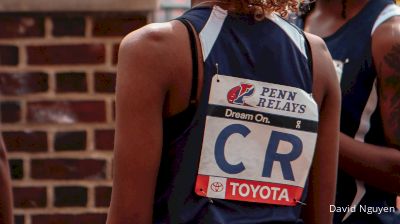 Penn Relays 2024 Schedule Day 3: Here Are Today's Events
Penn Relays 2024 Schedule Day 3: Here Are Today's EventsApr 27, 2024
 Penn Relays 2024 Results On Day 2: See Which NCAA Stars Won
Penn Relays 2024 Results On Day 2: See Which NCAA Stars WonApr 27, 2024
 Pro Men's 5k Open/club, Event 403, Finals 1
Pro Men's 5k Open/club, Event 403, Finals 1Apr 27, 2024
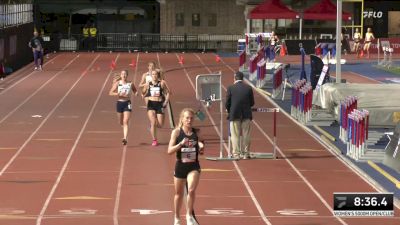 Pro Women's 5k Open/club, Event 402, Finals 1
Pro Women's 5k Open/club, Event 402, Finals 1Apr 27, 2024
 Pro Mixed Distance Medley Relay Corporate, Event 401, Finals
Pro Mixed Distance Medley Relay Corporate, Event 401, FinalsApr 27, 2024
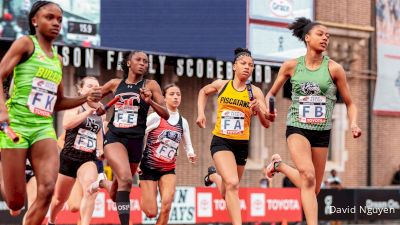 Penn Relays 2024 Schedule Day 2: Here Are Today's Events
Penn Relays 2024 Schedule Day 2: Here Are Today's EventsApr 26, 2024